🚗🏍️ Welcome to Motoshare!
Turning Idle Vehicles into Shared Rides & New Earnings.
Why let your bike or car sit idle when it can earn for you and move someone else forward?
From Idle to Income. From Parked to Purpose.
Earn by Sharing, Ride by Renting.
Where Owners Earn, Riders Move.
Owners Earn. Riders Move. Motoshare Connects.
With Motoshare, every parked vehicle finds a purpose. Partners earn. Renters ride. Everyone wins.
1. Introduction to Kargil
Overview of Kargil
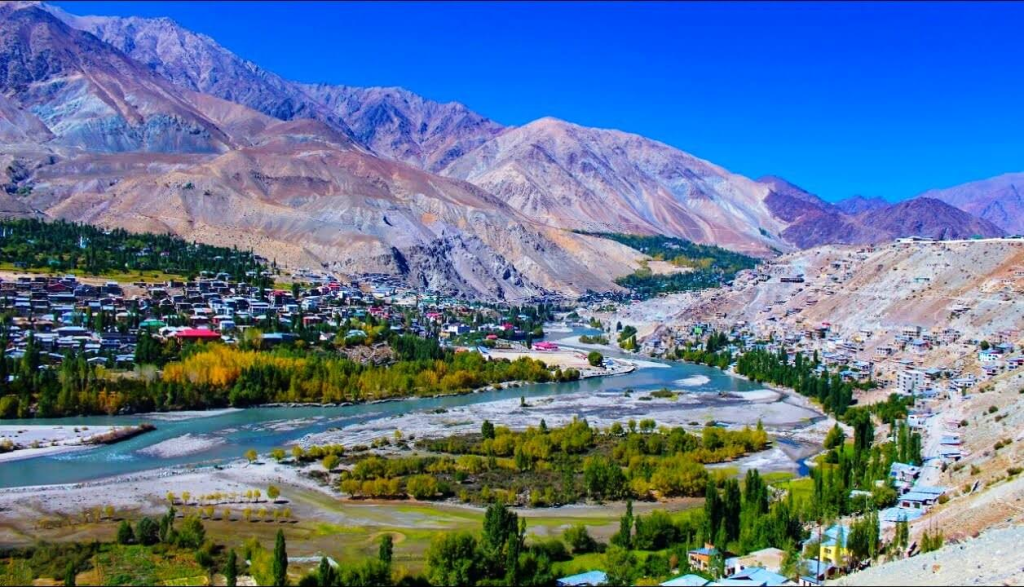
Kargil is a town located in the Union Territory of Ladakh in northern India. Situated at an elevation of approximately 2,676 meters (8,780 feet) above sea level, it is the second-largest town in Ladakh, after Leh. Kargil is known for its significant historical and strategic importance, particularly in modern Indian history. The town became globally recognized during the 1999 Kargil War between India and Pakistan, a conflict that brought to light the rugged terrain and the indomitable spirit of the Indian Armed Forces.
Historically, Kargil was an important trade center on the ancient silk route, connecting India with Central Asia. The town has long served as a melting pot of cultures, with influences from Buddhist, Islamic, and Tibetan traditions, making it a unique and culturally rich destination.
Geographical Importance
Kargil’s geographical location is one of its defining characteristics. It lies midway between Srinagar and Leh, making it a crucial stopover for travelers journeying between these two major destinations. The town is situated along the banks of the Suru River, a tributary of the Indus, which adds to the natural beauty of the area.
The strategic location of Kargil also plays a vital role in India’s defense, as it is near the Line of Control (LoC) with Pakistan. The rugged terrain, high-altitude passes, and narrow valleys make it both a challenging and significant region from a military standpoint. The town is also the gateway to the stunning Zanskar Valley, known for its remote monasteries and breathtaking landscapes.
Cultural Significance
Kargil is a cultural mosaic, reflecting the rich heritage of the Ladakhi, Balti, and Shina communities that inhabit the region. The majority of Kargil’s population is Muslim, with a significant presence of Shia Muslims, who have distinct cultural practices and traditions. The local language, Balti, is a blend of Tibetan and Persian, highlighting the area’s historical connections with both Tibet and Central Asia.
Festivals in Kargil are vibrant and colorful, with traditional music, dance, and food playing a central role in celebrations. One of the most prominent festivals is the annual Nowruz (Persian New Year), celebrated with great enthusiasm. The town is also known for its traditional handicrafts, including Pashmina shawls, carpets, and intricate woodwork, which reflect the artistic heritage of the region.
The Buddhist influence is evident in the numerous monasteries scattered across the surrounding areas, including the ancient Mulbekh Monastery, which houses a giant Maitreya Buddha statue carved into a cliff. The coexistence of Islamic and Buddhist cultures in Kargil creates a unique cultural tapestry that is both diverse and harmonious.
Kargil is not just a place of historical and strategic importance; it is a living example of cultural diversity and resilience in one of the most challenging environments on Earth. Visitors to Kargil are not only greeted by its stunning natural beauty but also by the warmth and hospitality of its people, who take pride in their rich cultural heritage.
2. Best Time to Visit Kargil: Seasonal Guide
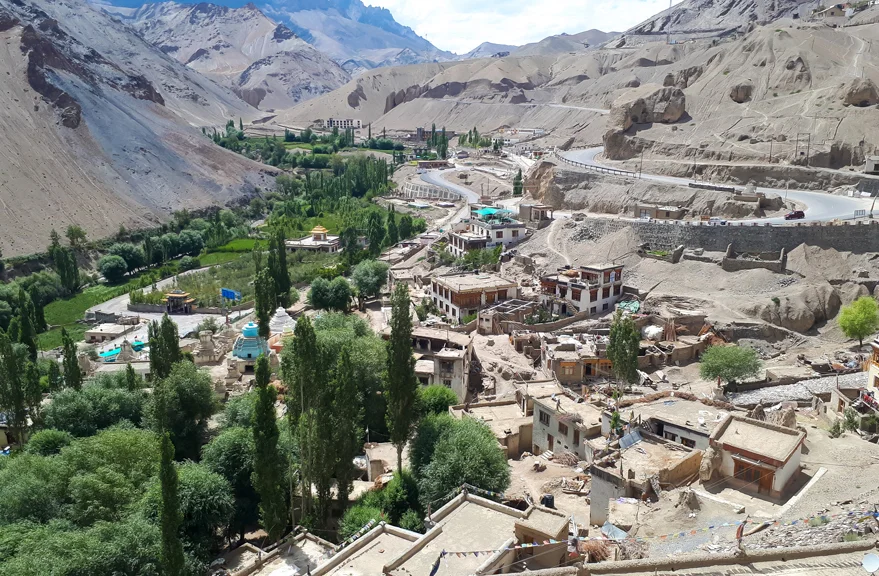
1. Spring (March to May)
- Weather: During spring, Kargil starts to emerge from the cold of winter. The temperature ranges from 5°C to 15°C. The snow begins to melt, revealing the lush greenery and blooming flowers.
- Activities: This is a great time for sightseeing, trekking, and exploring the natural beauty of Kargil. The weather is pleasant, making it ideal for outdoor activities.
- Festivals: The Ladakh festival in May is a cultural highlight, showcasing traditional music, dance, and local customs.
2. Summer (June to August)
- Weather: Summer in Kargil is the peak tourist season. Temperatures range from 12°C to 25°C, with long, sunny days. The weather is perfect for trekking, biking, and exploring the rugged landscape.
- Activities: This is the best time for trekking in Suru Valley, visiting Drass War Memorial, and enjoying the breathtaking views of the surrounding mountains. Adventure enthusiasts can indulge in biking and river rafting.
- Festivals: The Hemis Festival, celebrated in nearby Leh in June/July, is a colorful Buddhist festival worth attending.
3. Autumn (September to November)
- Weather: Autumn brings a cool and crisp climate to Kargil. Temperatures range from 10°C to 20°C in September but drop to around 0°C by November. The landscape is adorned with golden hues, making it a picturesque time to visit.
- Activities: This is an excellent time for photography, trekking, and experiencing the local culture. The weather is still pleasant for outdoor activities.
- Festivals: Ladakh Harvest Festival in September celebrates the bountiful harvest season with traditional music, dance, and local cuisine.
4. Winter (December to February)
Festivals: Losar, the Tibetan New Year, is celebrated in December/January, bringing warmth and joy to the cold months.
Weather: Winter in Kargil is harsh, with temperatures often dropping below -20°C. Heavy snowfall is common, and the region becomes a winter wonderland.
Activities: Winter is not the best time for general tourism due to extreme cold and road closures. However, it is ideal for those seeking adventure in snow-covered terrains and experiencing the serene beauty of a winter landscape.
3. How to Reach Kargil
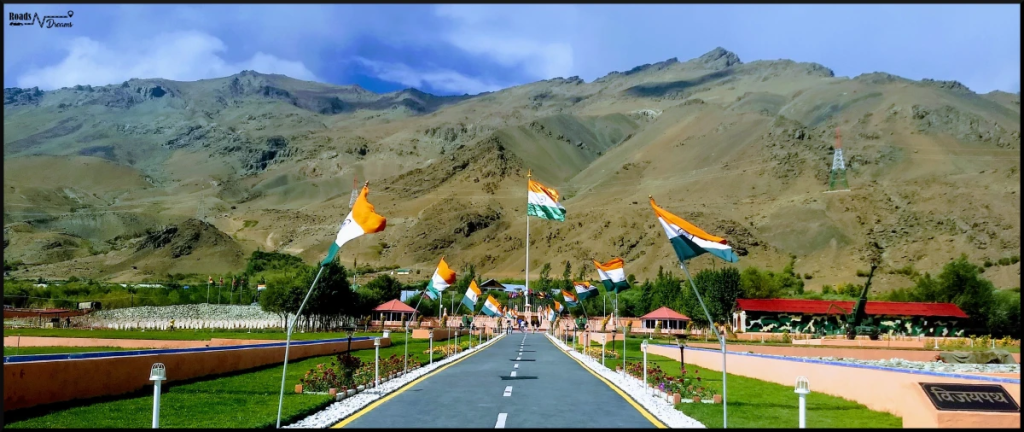
1. By Air:
- Nearest Airports:
- Kushok Bakula Rimpochee Airport (Leh): The nearest airport to Kargil, located about 210 km away. This airport is well-connected to major Indian cities like Delhi, Mumbai, and Srinagar. Regular flights operate throughout the year, although weather conditions in winter may cause delays or cancellations.
- Srinagar International Airport: Approximately 230 km from Kargil, this airport offers flights from major cities like Delhi, Mumbai, and Jammu. Srinagar is a good alternative if you’re traveling during the summer months.
- Flight Options:
- From Delhi: Multiple daily flights to both Leh and Srinagar.
- From Mumbai: Direct flights to Srinagar and Leh with layovers in Delhi.
- From Jammu: Direct flights to Srinagar.
- Further Connectivity:
- From Leh: You can hire a taxi or take a bus to Kargil. The journey takes around 5-6 hours.
- From Srinagar: Taxis and buses are available to Kargil, with a travel time of approximately 7-8 hours.
2. By Road:
- From Srinagar:
- Distance: ~230 km
- Route: Srinagar → Sonamarg → Zoji La Pass → Drass → Kargil
- Travel Time: 7-8 hours
- Details: The road from Srinagar to Kargil is part of National Highway 1 (NH1). It’s a scenic route passing through the beautiful Sonamarg and the challenging Zoji La Pass, which remains closed in winter due to heavy snowfall. The drive is both exhilarating and picturesque, with stops at places like Drass, the second coldest inhabited place on Earth.
- From Leh:
- Distance: ~210 km
- Route: Leh → Nimmu → Lamayuru → Mulbekh → Kargil
- Travel Time: 5-6 hours
- Details: This route is also on NH1 and offers breathtaking views of the rugged mountains. Key attractions en route include the Magnetic Hill, Lamayuru Monastery, and the picturesque Mulbekh. The road is generally in good condition, making the journey smooth and enjoyable.
- From Manali:
- Distance: ~490 km
- Route: Manali → Keylong → Sarchu → Pang → Leh → Kargil
- Travel Time: 2-3 days, with stops in Leh
- Details: This route is part of the famous Manali-Leh Highway, which is only open from June to September due to heavy snowfall. It’s an adventurous journey, crossing several high-altitude passes like Rohtang Pass, Baralacha La, and Tanglang La. After reaching Leh, you can continue to Kargil as described above.
3. By Rail:
- Nearest Railway Stations:
- Jammu Tawi Railway Station: Approximately 450 km from Kargil, this is the nearest major railway station. It is well-connected to cities like Delhi, Mumbai, and Kolkata.
- Udhampur Railway Station: Around 380 km from Kargil, Udhampur is another option with connections to Delhi and Jammu.
- Further Road Connectivity:
- From Jammu/Udhampur: You can hire a taxi or take a bus to Srinagar and then proceed to Kargil by road as described earlier. The total travel time from Jammu to Kargil by road is about 10-12 hours, making it a long but scenic journey.
4. Local Transportation in Kargil:
- Taxis: The most common and convenient mode of transportation within Kargil. Taxis can be hired for local sightseeing, trips to nearby villages, and visits to attractions like the Drass War Memorial and Suru Valley.
- Buses: Local buses operate between Kargil and nearby towns and villages. However, they are less frequent and may not cover all tourist spots.
- Motorbikes: For the more adventurous, renting a motorbike is a popular option. It allows greater flexibility in exploring the rugged terrain and remote areas.
- Walking: Many of Kargil’s attractions are close to each other, so walking is a viable and enjoyable option for getting around the town and its immediate surroundings.
4. Where to Stay in Kargil
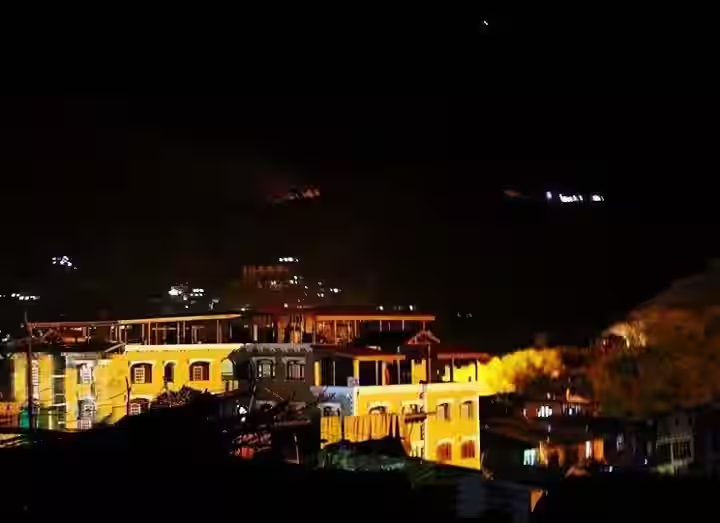
1. Accommodation Options:
- Luxury Hotels:
- Facilities: High-end amenities, including spacious rooms, in-house restaurants, Wi-Fi, central heating, and often offer panoramic views of the surrounding mountains.
- Price Range: INR 6,000 – INR 15,000 per night.
- Mid-Range Hotels:
- Facilities: Comfortable rooms with basic amenities, such as hot water, room service, and sometimes an in-house restaurant.
- Price Range: INR 3,000 – INR 6,000 per night.
- Budget Guesthouses and Homestays:
- Facilities: Clean and cozy rooms, with basic amenities like hot water and meals often prepared by the host family.
- Price Range: INR 1,000 – INR 3,000 per night.
2. Recommended Hotels:
- The Highland Mountain Resort & Spa
- Location: Baroo, Kargil
- Amenities: Luxury hotel offering spacious rooms with mountain views, an in-house restaurant serving multi-cuisine dishes, spa services, and Wi-Fi.
- Pricing: Approximately INR 8,000 – INR 12,000 per night.
- Details: Located in a serene area, this hotel is ideal for travelers looking for comfort and a touch of luxury in the mountains.
- Hotel D’Zojila
- Location: Near Kargil Bus Stand, Kargil
- Amenities: Mid-range hotel with comfortable rooms, an on-site restaurant, room service, and parking facilities.
- Pricing: Approximately INR 4,000 – INR 6,000 per night.
- Details: A popular choice for travelers due to its central location, making it convenient for exploring Kargil town and nearby attractions.
- Hotel Chhutuk Heights
- Location: Chhutuk, Kargil
- Amenities: Modern rooms with beautiful views, restaurant, garden area, and 24-hour room service.
- Pricing: Approximately INR 5,000 – INR 7,000 per night.
- Details: Located a bit away from the town center, this hotel offers peace and tranquility, perfect for those looking to unwind.
- The Kargil
- Location: Near Kargil Market, Kargil
- Amenities: Boutique hotel with well-appointed rooms, in-house restaurant, Wi-Fi, and a cozy ambiance.
- Pricing: Approximately INR 6,000 – INR 10,000 per night.
- Details: Known for its warm hospitality and central location, making it easy to explore the town and its surroundings.
- Hotel Siachen
- Location: Near Tourist Reception Centre, Kargil
- Amenities: Budget-friendly hotel with basic amenities, including a restaurant, clean rooms, and Wi-Fi.
- Pricing: Approximately INR 2,000 – INR 4,000 per night.
- Details: A popular choice among budget travelers, offering good value for money with essential services.
3. Camping and Adventure Stays:
- Eco-Lodges and Campsites:
- Purik Heritage Camping Resort
- Location: Pashkum Village, Kargil
- Details: An eco-friendly campsite offering luxury tents with attached bathrooms, organic meals, and guided tours. It provides a unique blend of comfort and adventure in a natural setting. Pricing ranges from INR 5,000 to INR 8,000 per night.
- Nun Kun Camp
- Location: Near Rangdum Monastery, Kargil
- Details: A remote campsite offering basic tents with sleeping bags, shared bathrooms, and meals. Ideal for trekkers and adventurers exploring the Suru Valley. Pricing is around INR 2,000 to INR 3,500 per night.
- Drass Adventure Camp
- Location: Drass, near Kargil
- Details: A popular campsite in the Drass Valley, offering tents with basic facilities, meals, and guided treks. Perfect for adventure enthusiasts and nature lovers. Pricing ranges from INR 3,000 to INR 5,000 per night.
- Purik Heritage Camping Resort
5. Top Attractions and Places to Visit in Kargil
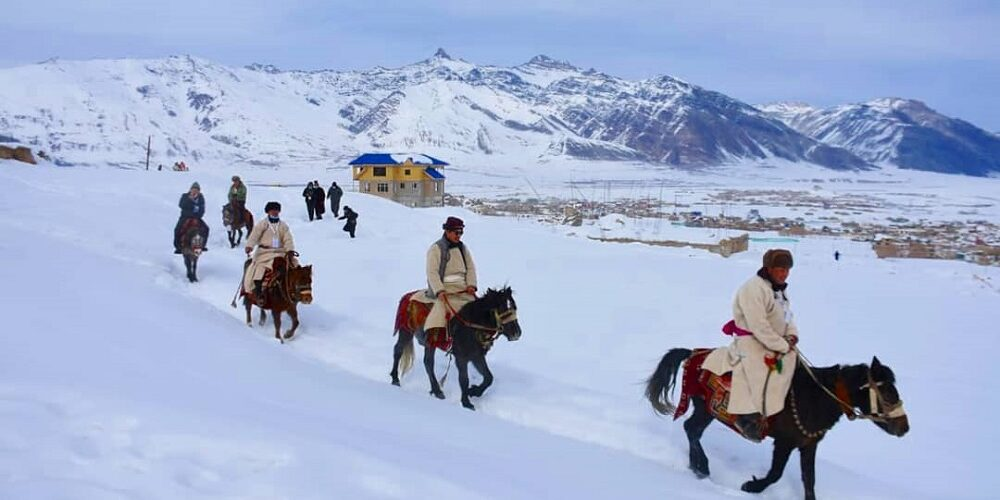
1. Historical Sites:
- Kargil War Memorial
- Location: Drass, about 60 km from Kargil town.
- Details: This memorial is dedicated to the soldiers of the Indian Army who sacrificed their lives during the Kargil War in 1999. The memorial features a large pink sandstone wall inscribed with the names of the martyrs, as well as a museum that showcases photographs, weapons, and documents from the war. The view of the Tololing Range and Tiger Hill from the memorial is both awe-inspiring and poignant.
- Dras War Memorial
- Location: Drass, near the Kargil War Memorial.
- Details: Also known as the Vijaypath, this memorial honors the bravery and valor of the Indian soldiers who fought in the Kargil War. The memorial includes a gallery that displays war artifacts, a souvenir shop, and a poignant Amar Jawan Jyoti (eternal flame) that burns in memory of the fallen soldiers.
- Tiger Hill
- Location: Near Drass, visible from the Dras War Memorial.
- Details: This strategic peak was one of the major battle sites during the Kargil War. While the peak itself is not accessible to the general public, it holds immense historical significance, and viewing it from a distance evokes a deep sense of respect and remembrance for the soldiers who fought there.
2. Natural Wonders:
- Suru Valley
- Location: Extends from Kargil town towards the south, stretching to the foothills of the Zanskar Range.
- Details: Suru Valley is one of the most picturesque valleys in Ladakh, offering breathtaking views of lush green landscapes surrounded by snow-capped peaks. The valley is dotted with traditional villages, apricot orchards, and fields of barley. Adventure enthusiasts can enjoy trekking, camping, and photography in this scenic valley.
- Rangdum Monastery
- Location: About 130 km from Kargil, en route to Padum in the Zanskar Valley.
- Details: Perched on a hilltop in the remote Rangdum Valley, this monastery offers stunning views of the surrounding mountains and glaciers. The 18th-century monastery houses ancient Tibetan Buddhist artifacts, manuscripts, and beautiful frescoes. It is also a popular stopover for trekkers heading towards the Zanskar region.
- Nun Kun Peaks
- Location: Visible from the Suru Valley.
- Details: The Nun Kun Peaks are the highest peaks in the Zanskar Range, with the Nun Peak reaching 7,135 meters and Kun Peak standing at 7,077 meters. These majestic peaks are popular among mountaineers and trekkers for their challenging climbs and stunning vistas. Even for non-climbers, the view of these peaks from the Suru Valley is a highlight of any trip to Kargil.
3. Religious Sites:
- Mulbekh Monastery
- Location: About 45 km from Kargil on the Kargil-Leh highway.
- Details: This ancient monastery is famous for its 9-meter-tall statue of Maitreya Buddha, carved into a rock face. The monastery itself is perched on a hilltop, offering panoramic views of the surrounding valley. Inside, visitors can see beautiful murals, thangkas (Tibetan paintings), and relics of Buddhist culture.
- Shargole Monastery
- Location: Approximately 35 km from Kargil, near Mulbekh.
- Details: Shargole Monastery is unique for its location, seemingly hanging on the edge of a cliff. This small yet fascinating monastery is known for its cave-like prayer hall and beautiful statues of Buddha. The setting of the monastery, combined with its spiritual ambiance, makes it a must-visit for those interested in the religious heritage of the region.
- Karsha Monastery
- Location: Zanskar Valley, around 105 km from Kargil.
- Details: The largest monastery in Zanskar, Karsha Monastery, is a major center of Buddhist learning and spiritual practice. It houses a collection of ancient scriptures, stupas, and wall paintings, and offers breathtaking views of the Zanskar Valley below. The annual Karsha Gustor festival, celebrated with masked dances, attracts many visitors.
4. Cultural Sites:
- Kargil Museum
- Location: Kargil town.
- Details: The Kargil Museum showcases the rich history, culture, and heritage of the region. Exhibits include artifacts from the Ladakhi, Tibetan, and Central Asian cultures, as well as items related to the Silk Route trade. The museum also has a section dedicated to the Kargil War, providing visitors with a deeper understanding of the conflict and its impact on the region.
- Local Markets
- Location: Kargil town.
- Details: The bustling markets of Kargil offer a glimpse into the daily life of the locals. Visitors can shop for traditional Ladakhi handicrafts, woolen clothes, Pashmina shawls, and local produce like apricots and dry fruits. The markets are also a great place to interact with the locals and experience the vibrant culture of the region.
- Munshi Aziz Bhat Museum of Central Asian and Kargil Trade Artifacts
- Location: Kargil town.
- Details: This privately-run museum is a treasure trove of artifacts related to the ancient trade routes that passed through Kargil. The collection includes rare items such as manuscripts, coins, jewelry, textiles, and household items that reflect the cultural exchange between Central Asia and Kargil. The museum offers valuable insights into the region’s history as a trading hub.
6. Things to Do in Kargil
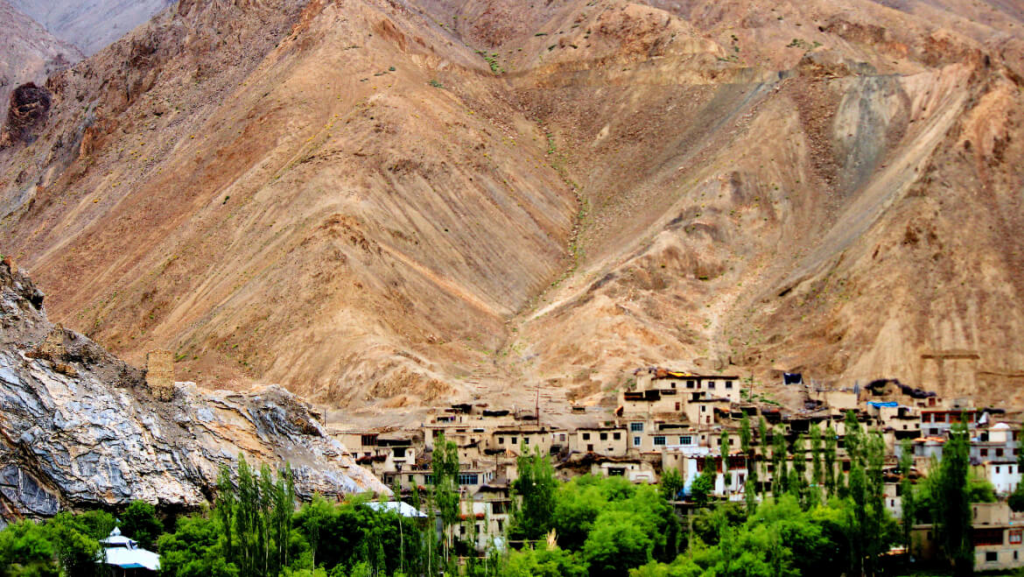
1. Adventure Activities:
- Trekking
- Suru Valley Trek: Explore the lush green landscapes, traditional Ladakhi villages, and breathtaking views of the Nun Kun Peaks. This trek is suitable for all levels and offers a chance to experience the natural beauty of Kargil.
- Padum to Phuktal Monastery Trek: This challenging trek takes you through the remote Zanskar Valley, offering stunning views of rugged mountains and an opportunity to visit the ancient Phuktal Monastery, built into a cliffside.
- Drang Drung Glacier Trek: One of the highlights for adventure seekers, this trek offers mesmerizing views of the massive Drang Drung Glacier. The trek is moderately challenging and best suited for experienced trekkers.
- Camping
- Rangdum Valley: Set up camp amidst the serene landscapes of the Rangdum Valley, surrounded by snow-capped peaks and glaciers. The peaceful environment makes it a perfect spot for stargazing and connecting with nature.
- Suru Valley: Camp along the banks of the Suru River, where you can enjoy the lush green surroundings and the sound of flowing water. The valley is also ideal for short hikes and exploration.
- River Rafting
- Suru River: Experience the thrill of river rafting on the Suru River, where the rapids provide an exciting challenge for adventure enthusiasts. The best time for rafting is during the summer months when the water levels are ideal.
- Zanskar River (near Kargil): For those willing to travel a bit, the Zanskar River offers some of the most thrilling rafting experiences in Ladakh, with deep gorges and challenging rapids.
- Rock Climbing
- Nun Kun Massif: The towering Nun Kun Peaks are a popular destination for experienced climbers. The challenging terrain and high altitude make it a demanding climb, but the reward is the incredible views from the summit.
- Local Cliffs: For those looking for less challenging climbs, the cliffs around Kargil offer various routes suitable for beginner and intermediate climbers. Guided rock climbing tours are available through local adventure agencies.
2. Cultural Experiences:
- Attending Local Festivals
- Ladakh Harvest Festival (September): This festival celebrates the bountiful harvest season with traditional music, dance, and local cuisine. Visitors can witness the vibrant cultural performances and participate in community feasts.
- Hemis Festival (June/July): Although celebrated in Leh, the Hemis Festival is a significant event in the region, honoring Guru Padmasambhava with colorful mask dances and religious rituals. Kargil residents also participate in this cultural celebration.
- Interacting with the Locals
- Homestays: Stay with a local family in a homestay and experience Ladakhi hospitality firsthand. This is a unique opportunity to learn about their daily lives, customs, and traditions.
- Village Visits: Explore traditional villages like Hunderman and Pashkum, where you can engage with the local community, learn about their crafts, and participate in their agricultural activities.
- Learning About Local Crafts
- Handicraft Workshops: Attend workshops where you can learn traditional crafts like Pashmina weaving, wood carving, and Thangka painting. These workshops offer hands-on experiences and insights into the local artisans’ skills.
- Apricot Harvesting: Participate in apricot harvesting in the Suru Valley during the summer months. Apricots are a significant part of the local economy, and harvesting them is a community activity that visitors can join.
3. Photography Spots:
- Suru Valley
- Best For: Capturing the lush green landscapes, traditional Ladakhi villages, and the majestic Nun Kun Peaks. The valley offers numerous spots for sunrise and sunset photography, with the golden light enhancing the natural beauty.
- Rangdum Monastery
- Best For: Landscape photography, with the monastery set against a backdrop of snow-capped mountains and glaciers. The isolation of the monastery adds a mystical quality to the images.
- Drang Drung Glacier
- Best For: Glacier photography and panoramic shots of the Zanskar Range. The sheer size of the glacier makes it a stunning subject for wide-angle shots.
- Mulbekh Monastery
- Best For: Capturing the 9-meter-tall statue of Maitreya Buddha carved into the rock face, with the surrounding landscape providing a dramatic backdrop.
- Kargil Town
- Best For: Street photography, capturing the daily life of the locals, bustling markets, and traditional Ladakhi architecture.
4. Shopping:
- Local Crafts
- Pashmina Shawls: Kargil is known for its high-quality Pashmina wool, and you can purchase beautifully crafted Pashmina shawls directly from local weavers. These shawls make for a luxurious and authentic souvenir.
- Wood Carvings: Traditional Ladakhi wood carvings, often depicting religious symbols and motifs, are popular items. These carvings can be found in various forms, from small trinkets to larger decorative pieces.
- Souvenirs
- Handmade Jewelry: Local artisans create beautiful jewelry using traditional designs and materials like turquoise, silver, and coral. These pieces are perfect for those looking for unique, handmade accessories.
- Thangka Paintings: These traditional Tibetan Buddhist paintings on cotton or silk are intricate and vibrant, often depicting deities or mandalas. Thangkas are both spiritual items and beautiful works of art.
- Special Products
- Apricot Products: Kargil is famous for its apricots, and you can buy a variety of apricot-based products, including dried apricots, apricot jam, and apricot oil. These products are delicious and make for excellent gifts.
- Organic Produce: Local markets offer organic vegetables, barley, and herbs, which are grown in the region’s fertile soil. These products are fresh, healthy, and a great way to support the local economy.
7. Food and Dining in Kargil
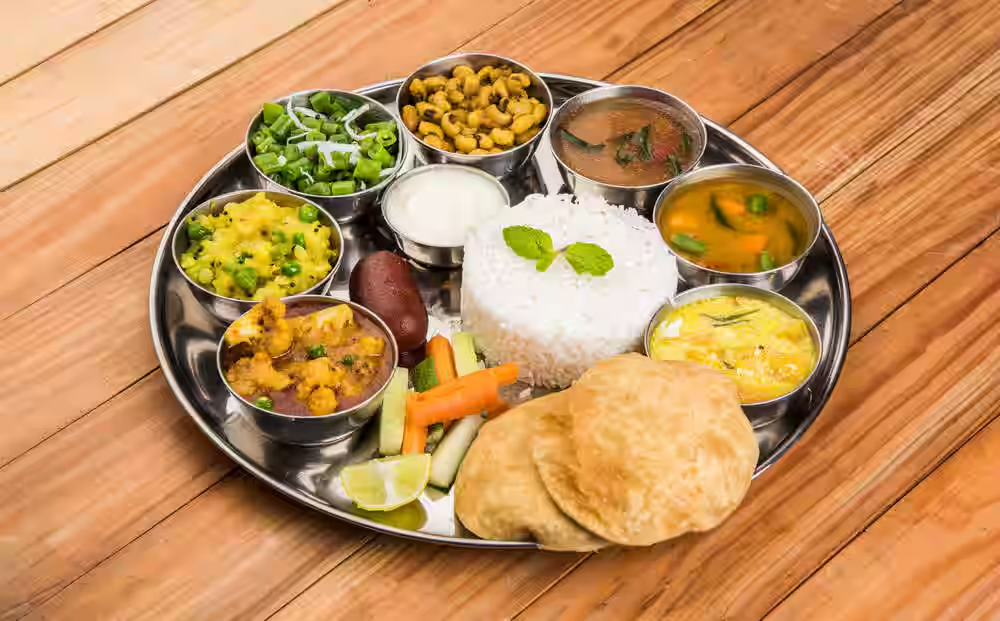
1. Local Cuisine:
Ladakhi cuisine is a unique blend of Tibetan, Central Asian, and North Indian influences, characterized by its use of local ingredients like barley, wheat, and dairy products. The cuisine is hearty and flavorful, designed to provide energy and warmth in the cold climate of the region.
- Must-Try Dishes:
- Thukpa: A hearty noodle soup made with vegetables, meat, and spices. Thukpa is a staple in Ladakh and perfect for warming up on chilly days.
- Momos: Steamed or fried dumplings filled with meat or vegetables, served with a spicy chili sauce. Momos are a popular snack and can be found at many eateries in Kargil.
- Skyu: A traditional Ladakhi pasta dish made with kneaded wheat dough, cooked with root vegetables and sometimes meat. It’s a comforting dish, especially during the winter months.
- Chutagi: Another traditional dish, chutagi consists of dough shaped into bowties and cooked in a thick vegetable and meat stew. It’s a rich and satisfying meal.
- Butter Tea (Gur Gur Chai): A traditional drink made with tea leaves, yak butter, salt, and water. It has a unique taste and is known for its warming properties.
- Khambir: A local bread, typically round and thick, often served with butter tea or as an accompaniment to stews and curries.
- Apricot Jam: Made from the locally grown apricots, this sweet and tangy jam is a must-try. It’s often served with bread or as a dessert topping.
2. Best Restaurants:
- Hotel Siachen Restaurant
- Location: Near Tourist Reception Centre, Kargil.
- Cuisine: Ladakhi, Indian, and Chinese.
- Details: A popular spot among tourists, offering a variety of Ladakhi dishes along with Indian and Chinese options. The restaurant is known for its warm ambiance and friendly service. Must-try dishes include Thukpa and Momos.
- The Highland Mountain Resort & Spa Restaurant
- Location: Baroo, Kargil.
- Cuisine: Multi-cuisine (Ladakhi, Indian, Continental).
- Details: This upscale restaurant offers a fine dining experience with a range of cuisines. The Ladakhi dishes are particularly recommended, with local specialties prepared using fresh ingredients. The restaurant also offers stunning views of the surrounding mountains.
- Hotel D’Zojila Restaurant
- Location: Near Kargil Bus Stand, Kargil.
- Cuisine: Ladakhi, North Indian, and Chinese.
- Details: A good choice for those looking to try a mix of Ladakhi and North Indian dishes. The restaurant is known for its cozy atmosphere and tasty food at reasonable prices. Try the Skyu and Chutagi here.
- Nirvana Restaurant
- Location: Main Market, Kargil.
- Cuisine: Indian, Tibetan, and Chinese.
- Details: A casual dining spot located in the heart of Kargil’s market area. The restaurant offers a variety of dishes, but the Tibetan momos and Thukpa are especially popular. It’s a great place to relax and enjoy a meal after exploring the market.
- Purki Khalsa Dhaba
- Location: Near Kargil Market, Kargil.
- Cuisine: Punjabi, North Indian.
- Details: For those craving North Indian food, this dhaba-style eatery offers delicious vegetarian and non-vegetarian options, including parathas, dal makhani, and paneer dishes. The homely atmosphere and hearty meals make it a favorite among travelers.
3. Street Food:
- Chole Kulche
- Location: Street vendors around Kargil Market.
- Details: A popular North Indian snack, chole kulche consists of spicy chickpeas served with fluffy bread. It’s a quick and satisfying meal, often enjoyed on the go.
- Samosas and Pakoras
- Location: Street stalls in Kargil Market.
- Details: These deep-fried snacks are popular throughout India, and Kargil is no exception. Samosas are filled with spiced potatoes or meat, while pakoras are made from vegetables dipped in chickpea flour batter and fried to crispy perfection. They are usually served with chutney.
- Apricot Products
- Location: Local markets and street vendors.
- Details: Kargil is famous for its apricots, and you can find a variety of apricot-based snacks and treats sold by street vendors. Dried apricots, apricot kernels, and apricot jam are popular choices.
- Momos
- Location: Small eateries and street stalls across Kargil.
- Details: A staple street food in Kargil, momos are available in both vegetarian and non-vegetarian varieties. These dumplings are usually served with a spicy chili sauce and make for a delicious and affordable snack.
8.Travel Tips and Safety in Kargil
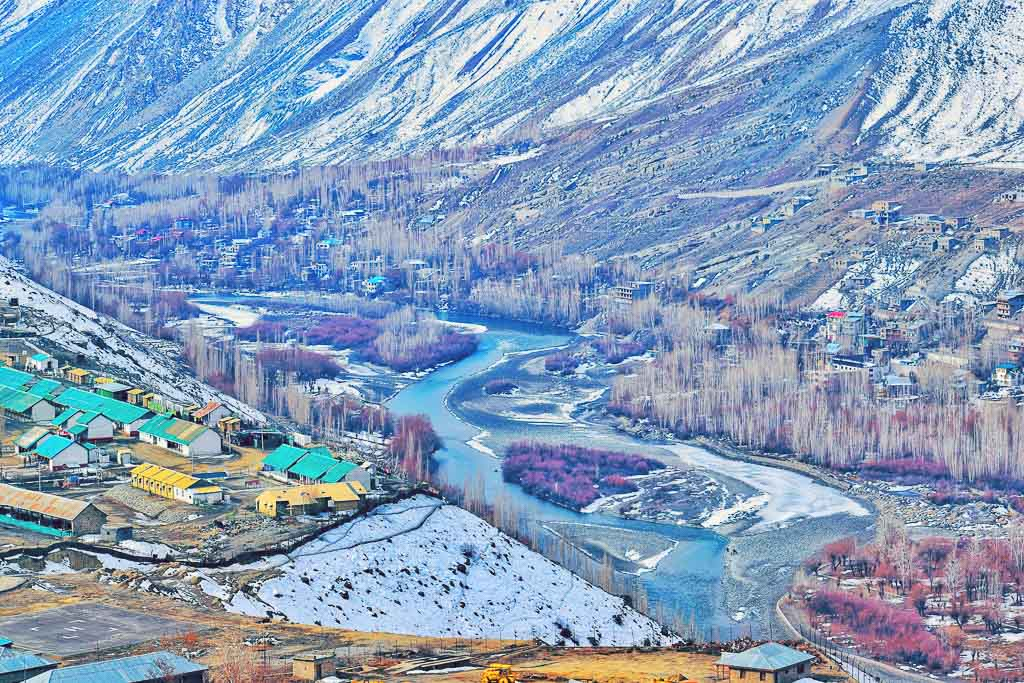
1. Altitude Sickness:
- Understanding Altitude Sickness:
- Kargil is situated at an altitude of approximately 2,676 meters (8,780 feet) above sea level. At this elevation, some travelers may experience symptoms of altitude sickness, also known as Acute Mountain Sickness (AMS).
- Common symptoms include headache, dizziness, nausea, shortness of breath, and fatigue. In severe cases, it can lead to more serious conditions like High Altitude Pulmonary Edema (HAPE) or High Altitude Cerebral Edema (HACE).
- Prevention Tips:
- Acclimatization: Spend a day or two at a lower altitude, such as Leh or Srinagar, before traveling to Kargil to allow your body to adjust gradually.
- Hydration: Drink plenty of water to stay hydrated. Avoid alcohol and caffeine, as they can contribute to dehydration.
- Avoid Overexertion: Take it easy during the first couple of days, and avoid strenuous activities until you are fully acclimatized.
- Medications: Consult your doctor about taking medications like acetazolamide (Diamox) to help prevent altitude sickness. Carrying a small oxygen cylinder can also be helpful in case of severe symptoms.
- Management:
- Rest: If you start to feel symptoms of altitude sickness, rest and avoid further ascent until you feel better.
- Descend: If symptoms worsen, descend to a lower altitude as soon as possible.
- Seek Medical Attention: In case of severe symptoms, seek medical help immediately.
2. Health and Medical Facilities:
- Hospitals:
- District Hospital Kargil: The main healthcare facility in Kargil, offering basic medical services and emergency care. It’s equipped to handle common health issues and minor injuries.
- Army Hospital, Kargil: This facility, primarily for military personnel, can provide medical assistance in emergencies. It’s well-equipped with medical supplies and trained staff.
- Pharmacies:
- There are several pharmacies in Kargil town where you can purchase over-the-counter medications and basic medical supplies. It’s advisable to carry any specific medications you might need, as certain prescriptions may not be readily available.
- First Aid Kit:
- It’s recommended to carry a personal first aid kit with essentials like bandages, antiseptic wipes, pain relievers, anti-diarrheal medication, and altitude sickness tablets.
3. Safety Tips:
- Remote Areas:
- Travel in Groups: When exploring remote areas, it’s safer to travel in groups or with a local guide who knows the terrain and conditions.
- Inform Someone: Always inform someone about your travel plans and expected return time when venturing into less accessible areas.
- Carry Essentials: In remote areas, carry enough water, snacks, and a power bank or spare batteries for your phone. A reliable map or GPS device is also essential.
- Weather Conditions:
- Check Weather Reports: Weather in Kargil can change rapidly, especially at higher altitudes. Always check the weather forecast before heading out for any activities.
- Prepare for Cold: Even in summer, temperatures can drop significantly at night. Carry warm clothing, including layers, a hat, and gloves.
- Road Travel:
- Road Conditions: Roads in and around Kargil can be rough and prone to landslides, especially during the monsoon season. Drive cautiously and be prepared for delays.
- Vehicle Maintenance: Ensure your vehicle is in good condition, with a full tank of fuel and spare tires, before setting out on long journeys. It’s also advisable to carry extra fuel if you’re traveling to remote areas.
- Wildlife:
- Respect Wildlife: Kargil is home to various wildlife, including Himalayan foxes and ibex. Maintain a safe distance and avoid disturbing them.
- Avoid Night Travel: Wild animals are more active at night, so it’s safer to avoid traveling after dark, especially in forested or mountainous areas.
4. Cultural Etiquette:
- Respect Local Customs:
- Dress Modestly: While Kargil is relatively liberal, it’s still respectful to dress modestly, especially when visiting religious sites. Cover your shoulders and knees, and remove your shoes before entering monasteries or temples.
- Photography: Always ask for permission before taking photos of people, especially in rural areas. Be mindful of cultural sensitivities when photographing religious ceremonies or sacred sites.
- Interaction with Locals:
- Politeness: The people of Kargil are known for their hospitality. Greet locals with a smile and use polite phrases like “Juley” (hello/thank you/goodbye in Ladakhi).
- Gifts and Donations: If visiting monasteries or villages, small donations or gifts (like school supplies for children) are appreciated, but not obligatory.
- Religious Observances: Respect local religious practices and avoid interfering with rituals. During festivals, be a respectful observer rather than an active participant unless invited.
- Tipping:
- Tipping is appreciated in Kargil, particularly in restaurants, hotels, and for guides or drivers. A tip of 10-15% of the bill is generally appropriate.
9. Packing Essentials for Kargil
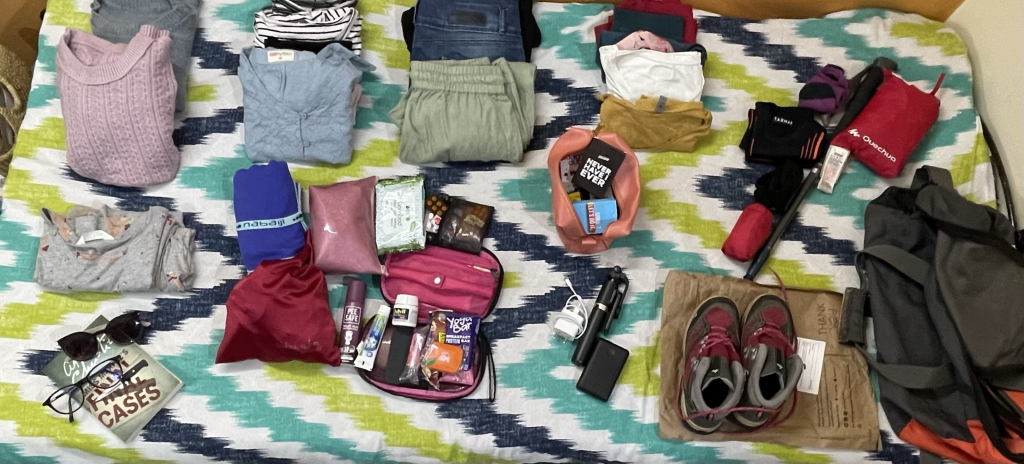
1. Clothing: What to Wear Based on the Season
- Spring (March to May):
- Layered Clothing: The weather can be unpredictable, with chilly mornings and evenings. Pack thermal inners, long-sleeved shirts, sweaters, and a warm jacket.
- Trousers and Warm Socks: Comfortable, warm trousers and thick socks are essential for staying cozy.
- Sun Protection: Sunglasses, a wide-brimmed hat, and sunscreen are necessary to protect against the strong UV rays at higher altitudes.
- Summer (June to August):
- Light Layers: Days are warm but can get cool in the evenings. Pack lightweight, breathable clothing like cotton shirts, but also bring a light jacket or fleece for the evenings.
- Trekking Gear: If trekking, bring moisture-wicking shirts, durable hiking pants, and a good pair of trekking boots.
- Rain Gear: A waterproof jacket and pants are advisable, especially if you’re visiting during the monsoon season (July-August).
- Autumn (September to November):
- Warm Layers: Temperatures drop, especially in the evenings. Pack thermal inners, fleece jackets, and a down jacket.
- Gloves and Hats: Woolen gloves, a warm hat, and a scarf are necessary for colder nights and early mornings.
- Sturdy Footwear: Good quality hiking boots with strong grip and warm socks are essential, especially if you plan on trekking.
- Winter (December to February):
- Heavy Winter Gear: Pack thermal base layers, a heavy down jacket, woolen sweaters, and insulated pants.
- Extreme Cold Accessories: Woolen hats, gloves, and scarves are essential, along with thermal socks and snow boots.
- Snow Gear: If you plan to engage in winter activities, consider packing snowshoes, crampons, and gaiters.
2. Gear and Equipment:
- Trekking Essentials:
- Backpack: A sturdy, waterproof backpack with a rain cover, ideally 40-60 liters for multi-day treks.
- Trekking Poles: Helpful for maintaining balance on rough terrain.
- Sleeping Bag: If you plan to camp, bring a sleeping bag rated for sub-zero temperatures.
- Headlamp: Essential for early morning or late evening treks, with extra batteries.
- Hydration System: A hydration pack or water bottles with purification tablets or a filter.
- Camping Essentials:
- Tent: A lightweight, four-season tent is advisable for camping in Kargil’s varying weather conditions.
- Cooking Gear: A portable stove, fuel, lightweight cookware, and utensils if you plan to cook your own meals.
- Multi-Tool: A versatile tool with a knife, can opener, and other essential functions.
- First Aid Kit: Include basic medical supplies, altitude sickness tablets, and blister care items.
- Portable Power Bank: Essential for keeping your devices charged, especially in remote areas with no electricity.
- Photography Gear:
- Camera: A DSLR or mirrorless camera with a wide-angle lens for landscapes and a zoom lens for wildlife photography.
- Tripod: A lightweight, sturdy tripod for stable shots, especially during sunrise or sunset.
- Extra Batteries and Memory Cards: Cold weather can drain batteries quickly, so bring spares along with plenty of memory storage.
- Lens Cleaning Kit: To keep your lenses free from dust and moisture.
3. Travel Documents:
- Permits:
- Inner Line Permit (ILP): Required for certain areas in Ladakh, including Kargil, for foreign nationals. Indian citizens do not typically need an ILP for Kargil, but it’s always good to check the latest regulations.
- Wildlife Permits: If visiting protected areas or reserves, check if a wildlife permit is needed.
- Identification:
- Passport and Visa: Foreign nationals must carry their passport with a valid visa. Ensure it’s up-to-date and keep a photocopy or digital copy as a backup.
- Government ID: Indian citizens should carry a government-issued ID like an Aadhaar card, driving license, or voter ID. A photocopy or digital copy should also be kept for emergencies.
- Other Documents:
- Travel Insurance: Comprehensive travel insurance that covers medical emergencies, trip cancellations, and high-altitude activities is highly recommended.
- Hotel and Flight Bookings: Printouts or digital copies of your hotel and flight bookings can be useful in case of connectivity issues.
- Emergency Contacts: A list of emergency contacts, including local authorities, your embassy, and family or friends back home.
10. Day Trips and Nearby Excursions from Kargil
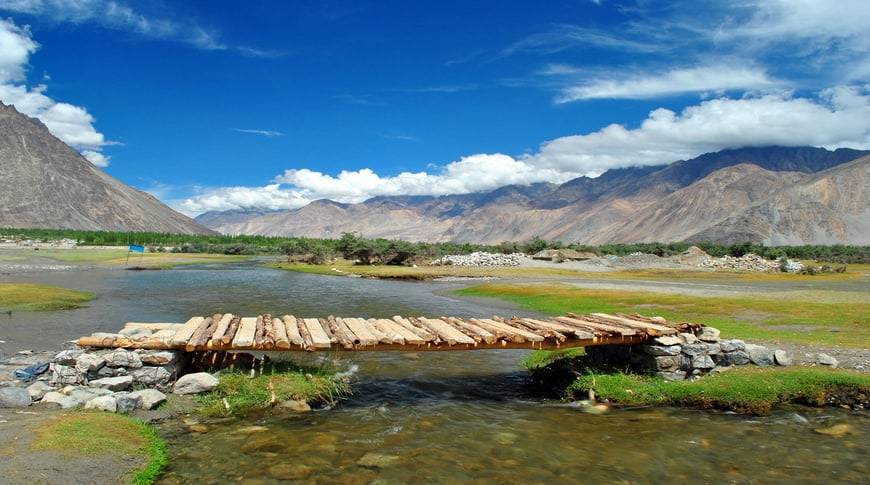
1. Dras Valley: The Second Coldest Inhabited Place on Earth
- Location: Approximately 60 km from Kargil, on the road towards Srinagar.
- Highlights:
- Dras War Memorial: A must-visit site dedicated to the soldiers who fought in the Kargil War. The memorial includes a gallery, the Amar Jawan Jyoti, and the names of the martyrs inscribed on a wall.
- Mushkoh Valley: Known for its beautiful landscapes and the site of fierce battles during the Kargil War. The valley is stunning in the summer, with wildflowers and lush greenery.
- Trekking: Dras serves as the starting point for several treks, including the trek to Mushkoh Valley and the Suru Valley.
- Cold Climate: Experience the harsh yet fascinating climate of Dras, especially in winter when temperatures can drop to -45°C.
- Day Trip Itinerary:
- Morning: Depart Kargil early and drive to Dras, visit the Dras War Memorial.
- Afternoon: Explore the Mushkoh Valley and enjoy a short trek if time permits.
- Evening: Return to Kargil before nightfall.
2. Zanskar Valley: Remote and Stunning
- Location: Around 105 km from Kargil, south of the Suru Valley.
- Highlights:
- Padum: The main town in Zanskar Valley, surrounded by picturesque mountains and monasteries. It serves as a base for exploring the region.
- Phuktal Monastery: One of the most spectacular monasteries in Ladakh, built into a cliffside. It can be reached via a trek from Padum.
- Drang Drung Glacier: En route to Zanskar, this massive glacier is a breathtaking sight. A popular spot for photography and a gateway to trekking routes.
- Zanskar River: The river is famous for the Chadar Trek in winter when it freezes over, but in summer, it offers beautiful rafting experiences.
- Day Trip Itinerary:
- Note: Zanskar Valley is best visited as a longer excursion or overnight trip due to its distance and the time required to explore its attractions.
- Morning: Start early from Kargil and drive towards Padum, stopping at the Drang Drung Glacier for photos.
- Afternoon: Visit the monasteries around Padum or take a short trek.
- Evening: Overnight stay in Padum is recommended before returning to Kargil the next day.
3. Mulbekh and Wakha: Ancient Rock Carvings and Monasteries
- Location: Mulbekh is about 45 km from Kargil, on the Kargil-Leh highway.
- Highlights:
- Mulbekh Monastery: Famous for the 9-meter-tall statue of Maitreya Buddha carved into the rock face. The monastery offers beautiful views of the surrounding valley and holds significant religious importance.
- Shargole Monastery: Located near Mulbekh, this monastery appears to be hanging off a cliff. It’s small but unique, with ancient murals and statues inside.
- Rock Carvings at Wakha: A short drive from Mulbekh, Wakha is known for its ancient rock carvings, including a depiction of the future Buddha. These carvings date back to the early centuries of Buddhism in the region.
- Day Trip Itinerary:
- Morning: Depart from Kargil and drive to Mulbekh, visit the Mulbekh Monastery and explore the rock carvings.
- Afternoon: Head to Shargole Monastery and then drive to Wakha to see the ancient rock carvings.
- Evening: Return to Kargil, enjoying the scenic drive along the way.
4. Leh Excursions: Famous Monasteries and Nubra Valley
- Location: Leh is approximately 210 km from Kargil, accessible via the Kargil-Leh highway.
- Highlights:
- Thiksey Monastery: One of the largest and most beautiful monasteries in Ladakh, known for its impressive architecture and the giant statue of Maitreya Buddha.
- Hemis Monastery: The wealthiest and one of the most famous monasteries in Ladakh, known for the annual Hemis Festival, featuring traditional masked dances.
- Shanti Stupa: A white-domed stupa offering panoramic views of Leh town and the surrounding mountains.
- Nubra Valley: Known for its sand dunes, double-humped Bactrian camels, and the stunning Diskit Monastery. The drive to Nubra Valley over Khardung La Pass, one of the highest motorable roads in the world, is an adventure in itself.
- Day Trip Itinerary:
- Note: Leh is best visited as an overnight trip from Kargil due to the distance and the numerous attractions.
- Morning: Drive from Kargil to Leh, stopping at Lamayuru Monastery en route.
- Afternoon: Explore the monasteries around Leh, including Thiksey and Hemis.
- Evening: Stay overnight in Leh and consider a trip to Nubra Valley the following day.
11. Itinerary Suggestions for Kargil
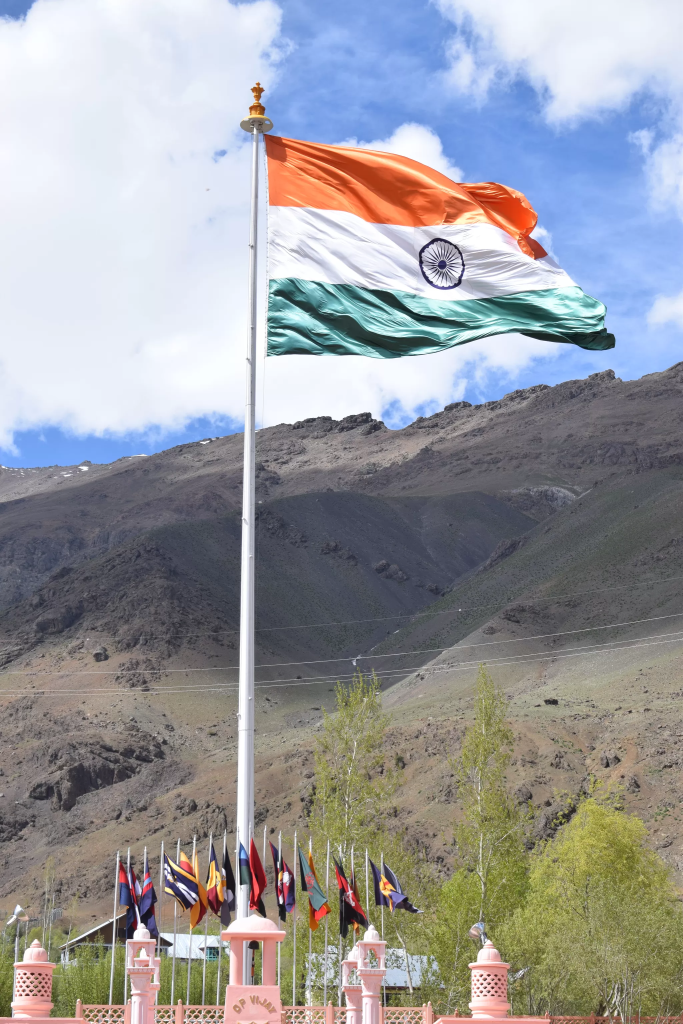
Short Trip Itineraries (2-3 Days)
| Day | Activities | Overnight Stay |
|---|---|---|
| Day 1 | – Arrive in Kargil – Visit Kargil War Memorial – Explore Kargil Market | Kargil |
| Day 2 | – Visit Mulbekh Monastery – Explore Wakha rock carvings – Visit Shargole Monastery | Kargil |
| Day 3 | – Excursion to Dras Valley – Visit Dras War Memorial – Explore Mushkoh Valley | Kargil (or depart) |
Extended Stay Itineraries (5-7 Days)
| Day | Activities | Overnight Stay |
|---|---|---|
| Day 1 | – Arrive in Kargil – Evening walk in Kargil Market | Kargil |
| Day 2 | – Visit Kargil War Memorial – Explore Munshi Aziz Bhat Museum – Evening walk along Suru River | Kargil |
| Day 3 | – Explore Mulbekh Monastery – Visit Shargole Monastery – See Wakha rock carvings | Kargil |
| Day 4 | – Depart for Zanskar Valley – Visit Drang Drung Glacier – Explore Padum | Padum |
| Day 5 | – Explore Zanskar Valley – Visit Phuktal Monastery (trekking) – Explore more of Padum | Padum (or Kargil) |
| Day 6 | – Visit Dras War Memorial – Explore Dras Valley and Tiger Hill | Kargil |
| Day 7 | – Departure from Kargil | Kargil (or depart) |
Adventure Itineraries (Focused on Trekking and Adventure Activities)
| Day | Activities | Overnight Stay |
|---|---|---|
| Day 1 | – Arrive in Kargil – Acclimatize and prepare for trekking | Kargil |
| Day 2 | – Begin Suru Valley Trek – Trek through Ladakhi villages – Camp along the Suru River | Campsite in Suru Valley |
| Day 3 | – Continue trek towards Nun Kun Peaks – Reach Nun Kun Base Camp – Camp at the base | Campsite in Suru Valley |
| Day 4 | – Descend from base camp – Return to Kargil | Kargil |
| Day 5 | – Drive to Dras Valley – Explore Mushkoh Valley – Try river rafting on the Suru River | Kargil |
| Day 6 | – Begin trek towards Zanskar Valley – Visit Drang Drung Glacier – Reach Padum and set up camp | Campsite/Guesthouse in Padum |
| Day 7 | – Return journey to Kargil | Kargil |
| Day 8 | – Departure from Kargil | Kargil (or depart) |
12. Cultural Insights for Kargil
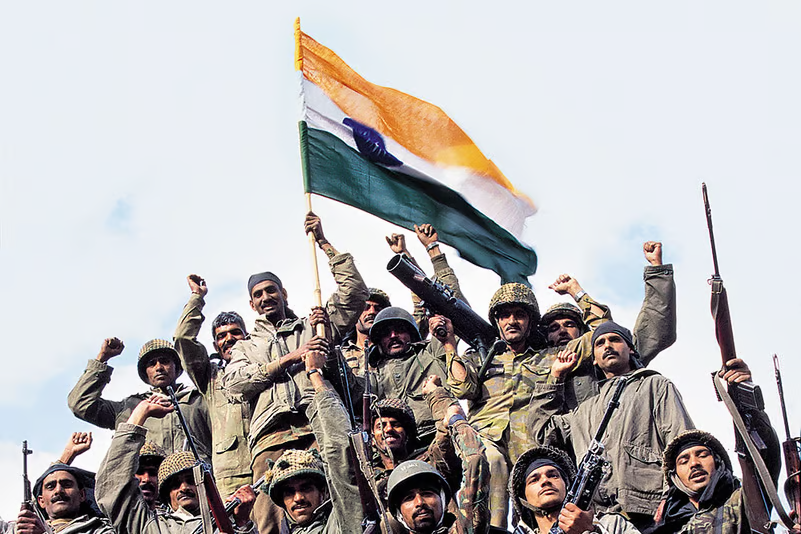
1. Local Festivals
| Festival | Description | How Tourists Can Participate |
|---|---|---|
| Losar (Ladakhi New Year) | – Timing: Typically celebrated in December or January, Losar marks the beginning of the Tibetan New Year. – Activities: The festival involves elaborate rituals, prayers, and traditional performances. Houses are cleaned and decorated, and special foods like Guthuk (barley noodle soup) are prepared. – Significance: It is a time to drive away evil spirits and bring good fortune for the coming year. | – Participation: Tourists can attend the public celebrations, watch traditional dances, and enjoy festive meals with locals. Visitors are often welcomed to join in the prayers at monasteries. – Respectful Behavior: Dress modestly and follow local customs when participating in religious ceremonies. |
| Dosmoche (Festival of the Scapegoat) | – Timing: Celebrated in February or March, Dosmoche is one of the most important festivals in Ladakh. – Activities: The festival involves the creation of an effigy that symbolizes evil. This effigy is then ceremoniously destroyed to ward off evil spirits. There are also mask dances performed by monks, which represent the victory of good over evil. – Significance: Dosmoche is meant to purify the community and bring protection from negative influences. | – Participation: Visitors can observe the ritual dances and the destruction of the effigy, which are usually held in monastery courtyards. – Photography: While photography is often allowed, always ask for permission before taking pictures, especially during religious rituals. |
| Yuru Kabgyat | – Timing: Celebrated in June or July at Lamayuru Monastery, not far from Kargil. – Activities: The festival features masked dances by monks, depicting the teachings of Buddha and the triumph of good over evil. Pilgrims from across the region gather to participate in the rituals. – Significance: It is a time for spiritual reflection and community gathering. | – Participation: Tourists can visit Lamayuru Monastery during the festival to witness the vibrant mask dances and other rituals. – Cultural Sensitivity: Be respectful of the spiritual significance of the event, and avoid interrupting the rituals. |
| Harvest Festival | – Timing: Celebrated in September, this festival marks the end of the harvest season. – Activities: Villagers participate in traditional dances, music performances, and communal feasts. Offerings are made to thank the gods for a bountiful harvest. – Significance: The festival is a time of gratitude and celebration for the community’s agricultural success. | – Participation: Visitors are often invited to join in the festivities, enjoy traditional food, and even participate in dances. – Gifts: Bringing a small gift, such as sweets or fruits, when visiting a local’s home during the festival is considered polite. |
2. Traditions and Customs
| Custom | Description | Tourist Considerations |
|---|---|---|
| Hospitality | – Description: The people of Kargil are known for their warm hospitality. Guests are often treated with great respect and are offered tea, snacks, and sometimes a meal when visiting a home. – Significance: Hospitality is a deep-rooted cultural value, and offering tea (often butter tea) is a sign of respect and welcome. | – Tourist Considerations: Always accept hospitality graciously, even if you just take a small sip of tea or a bite of food. It’s polite to bring a small gift when visiting a home. |
| Dress Modesty | – Description: Modesty in dress is important, especially in religious settings and rural areas. Women typically wear long skirts or pants, and men dress in traditional attire or modest Western clothing. – Significance: Modesty reflects respect for the community’s values and religious beliefs. | – Tourist Considerations: Tourists should dress conservatively, especially when visiting monasteries or attending festivals. Avoid wearing revealing clothing. |
| Prayer Flags and Stones | – Description: Prayer flags and mani stones (stones carved with prayers) are common in Kargil. These symbols are deeply spiritual, representing prayers and blessings carried by the wind. – Significance: The prayer flags and stones are placed to promote peace, compassion, and wisdom. | – Tourist Considerations: Do not touch or disturb prayer flags or mani stones. If you wish to take a photograph, do so from a respectful distance. |
| Greetings | – Description: The traditional greeting in Ladakh, including Kargil, is “Juley,” which means hello, goodbye, thank you, and more. – Significance: “Juley” is a versatile word that embodies the friendliness and warmth of the people. | – Tourist Considerations: Use “Juley” when greeting locals, saying thank you, or bidding farewell. It’s a simple way to show respect and connect with the local culture. |
| Religious Practices | – Description: Buddhism is the dominant religion in Kargil, and religious practices are an integral part of daily life. Monasteries, prayer wheels, and stupas are sacred, and locals often engage in prayer and meditation. – Significance: Religious practices are deeply respected, and participating in them is seen as a way to earn merit and blessings. | – Tourist Considerations: When visiting monasteries, remove your shoes, dress modestly, and remain quiet. Always walk clockwise around stupas and prayer wheels. |
13. Sustainable Travel Tips for Kargil
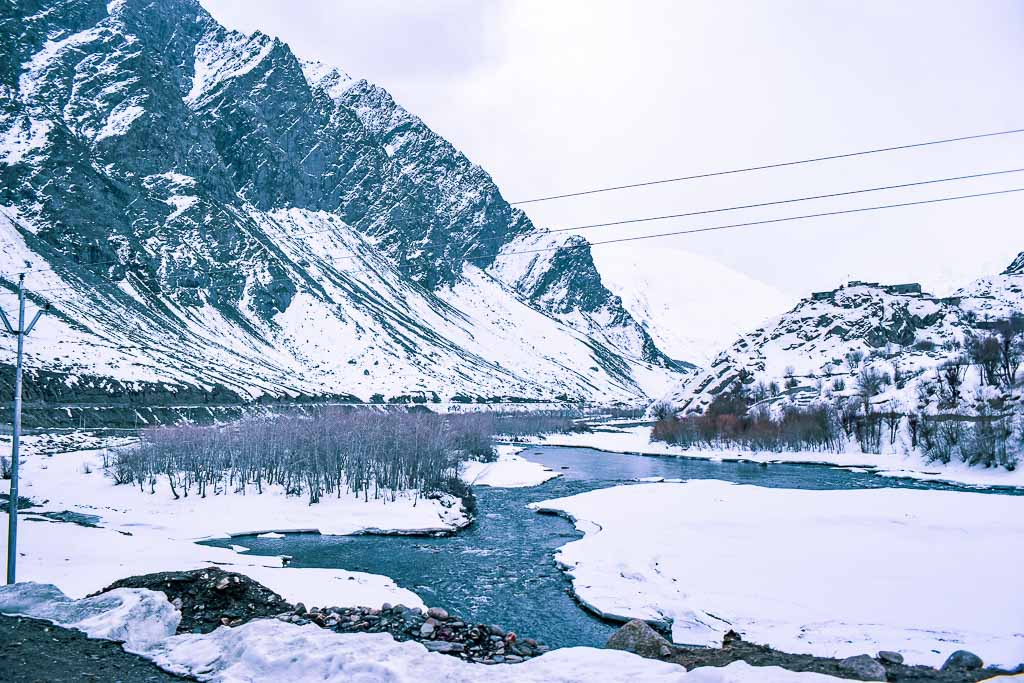
1. Eco-Friendly Practices
| Practice | Description | How to Implement |
|---|---|---|
| Minimize Plastic Use | – Description: Kargil, like many remote areas, faces challenges with waste management, especially plastic waste. Reducing plastic use helps protect the fragile environment. | – How to Implement: Bring a reusable water bottle and refill it instead of buying bottled water. Use cloth bags for shopping and avoid single-use plastic items. |
| Leave No Trace | – Description: The “Leave No Trace” principle is crucial in preserving the pristine landscapes of Kargil. This means leaving natural areas as you found them, without disturbing wildlife or polluting the environment. | – How to Implement: Pack out all trash, including food waste, and dispose of it properly in designated areas. Avoid picking flowers, disturbing wildlife, or straying from marked trails. |
| Use Eco-Friendly Products | – Description: The use of eco-friendly toiletries and cleaning products reduces the amount of harmful chemicals entering the environment. | – How to Implement: Bring biodegradable soap, shampoo, and toothpaste. Choose eco-friendly sunscreen that doesn’t harm water bodies or wildlife. |
| Conserve Water and Energy | – Description: Water and energy are precious resources in Kargil, where resources are limited and the environment is fragile. | – How to Implement: Take short showers and avoid unnecessary laundry. Turn off lights, heaters, and electronic devices when not in use. Choose accommodations that use solar energy or other sustainable practices. |
| Respect Wildlife | – Description: Kargil is home to diverse wildlife, and it’s important to observe animals without disturbing them or their habitats. | – How to Implement: Observe wildlife from a distance without trying to feed or interact with them. Stick to designated paths to avoid trampling on plants and disturbing animal habitats. |
2. Supporting Local Communities
| Practice | Description | How to Implement |
|---|---|---|
| Stay in Locally-Owned Accommodations | – Description: Choosing locally-owned hotels, guesthouses, or homestays helps support the local economy and provides a more authentic travel experience. | – How to Implement: Research and book accommodations that are run by local families or cooperatives. This not only supports the community but also allows you to experience local hospitality. |
| Buy Local Products | – Description: Purchasing locally-made products, such as handicrafts, textiles, and food, directly supports artisans and small businesses in Kargil. | – How to Implement: Visit local markets and buy souvenirs that are made by local artisans. Choose handicrafts, woven goods, and traditional items that reflect the local culture. |
| Eat at Local Restaurants | – Description: Dining at local eateries helps sustain local food producers and introduces you to the regional cuisine. | – How to Implement: Choose restaurants that serve traditional Ladakhi food, and try dishes made from locally-sourced ingredients. Avoid international chain restaurants, if available, in favor of local establishments. |
| Engage in Cultural Exchange | – Description: Engaging respectfully with local communities fosters mutual understanding and supports cultural preservation. | – How to Implement: Participate in local festivals, visit cultural sites with local guides, and learn about the customs and traditions of the people. Show respect by following local etiquette and learning basic Ladakhi greetings like “Juley.” |
| Support Local Guides and Tour Operators | – Description: Hiring local guides and using local tour operators ensures that your money stays within the community and supports those who know the area best. | – How to Implement: Look for tours and treks that are led by local guides. These guides provide insights into the region’s history, culture, and environment, enriching your travel experience. |
14. Frequently Asked Questions (FAQs) About Visiting Kargil
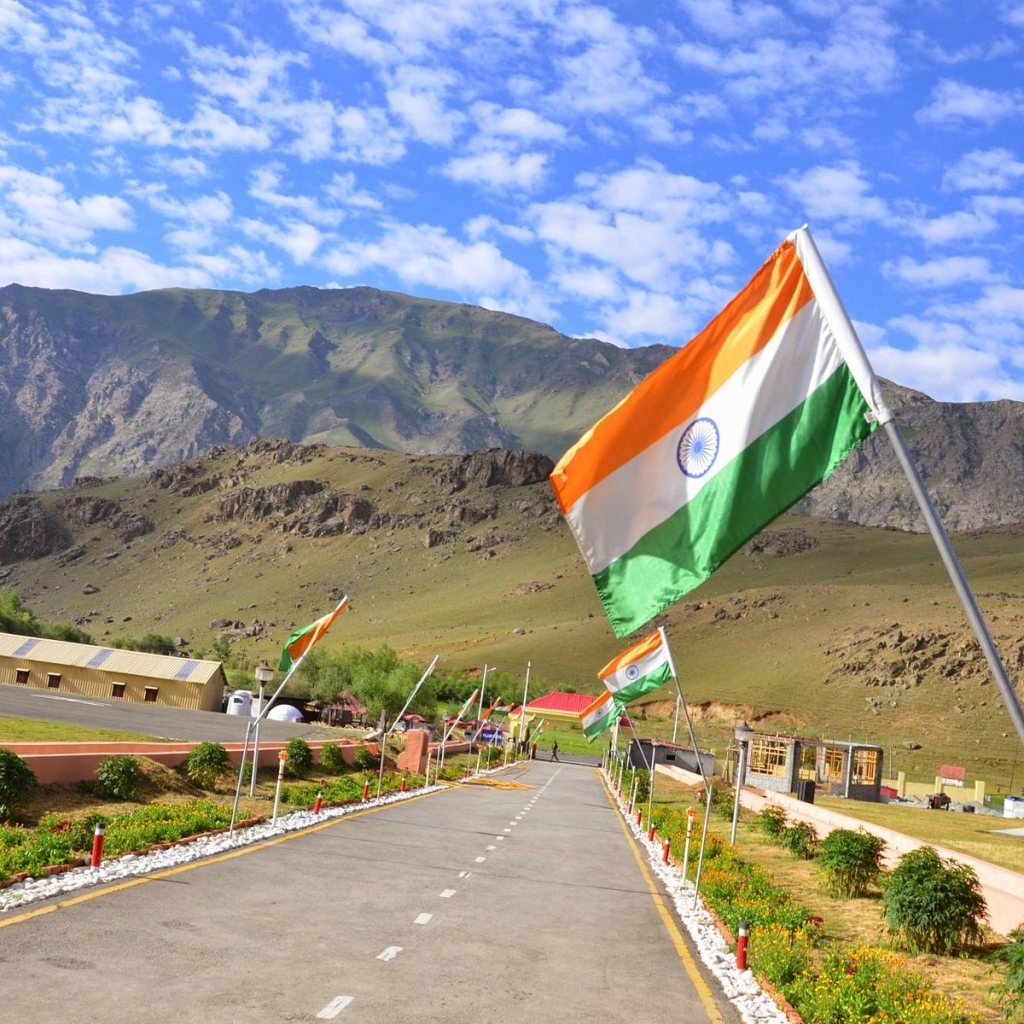
1. Common Queries
| Question | Answer |
|---|---|
| What is the best time to visit Kargil? | The best time to visit Kargil is from June to September when the weather is pleasant, and the roads are open. Spring (March to May) and autumn (September to November) are also good times, though the weather can be cooler. |
| Do I need a permit to visit Kargil? | Indian nationals do not need a permit to visit Kargil. However, foreign nationals may need an Inner Line Permit (ILP) for certain areas in Ladakh, including regions near Kargil. It’s advisable to check the latest regulations before your trip. |
| How do I reach Kargil? | Kargil can be reached by road from Srinagar (230 km) or Leh (210 km). The nearest airports are in Leh and Srinagar. Regular buses and shared taxis operate between these cities and Kargil. There are no direct train services to Kargil; the nearest railway station is Jammu Tawi. |
| Is Kargil safe for tourists? | Yes, Kargil is generally safe for tourists. The region has seen peace for many years, and the local people are hospitable. However, as with any remote area, it’s essential to take common precautions, such as staying informed about local conditions and avoiding travel at night in isolated areas. |
| What should I pack for a trip to Kargil? | Pack according to the season. In summer, bring light layers, a warm jacket for evenings, and sun protection. In winter, heavy woolens, thermal wear, and snow gear are essential. A first-aid kit, reusable water bottle, and basic medications are also recommended. |
| Are there ATMs in Kargil? | Yes, there are a few ATMs in Kargil town. However, it’s advisable to carry sufficient cash, especially if you plan to visit remote areas where ATMs may not be available or functional. |
| What languages are spoken in Kargil? | Ladakhi, Urdu, and Hindi are commonly spoken in Kargil. English is also understood, especially in tourist areas. Learning a few basic phrases in Ladakhi, such as “Juley” (hello/thank you/goodbye), is appreciated by locals. |
| Is Kargil suitable for family travel? | Yes, Kargil is suitable for family travel. The region offers a range of activities and attractions that can be enjoyed by all age groups, including historical sites, natural landscapes, and cultural experiences. However, families should be mindful of altitude sickness and the need for acclimatization. |
2. Travel Advice
| Concern | Advice |
|---|---|
| Transportation Options | Kargil is well-connected by road to both Srinagar and Leh. Private taxis, shared cabs, and buses are available for transport. For local travel within Kargil, taxis are the most convenient option. It’s recommended to book transportation in advance during peak season. |
| Safety in Remote Areas | When traveling to remote areas, always inform someone about your itinerary and expected return time. Traveling in groups or with a local guide is safer. Carry a fully charged phone, extra batteries, and a basic first-aid kit. Respect local customs and avoid venturing into restricted or sensitive areas. |
| Accommodations | Kargil offers a range of accommodations, from budget guesthouses to mid-range hotels and homestays. Booking in advance is recommended, especially during peak tourist season. For a more authentic experience, consider staying in a locally-owned guesthouse or homestay. |
| Altitude Sickness | Kargil is at an elevation of approximately 2,676 meters (8,780 feet). To prevent altitude sickness, acclimatize by spending a day or two at a lower altitude before arriving in Kargil. Stay hydrated, avoid overexertion, and consider taking medication like Diamox (after consulting a doctor). If symptoms persist, descend to a lower altitude and seek medical attention. |
| Cultural Etiquette | Respect local customs by dressing modestly, especially when visiting religious sites. Always ask for permission before taking photos of people or religious ceremonies. Use the local greeting “Juley” and be polite in your interactions. During festivals, participate respectfully and follow local norms. |
| Internet and Connectivity | Internet connectivity in Kargil can be limited, with slow speeds and occasional outages. Most hotels offer Wi-Fi, but the connection may not be reliable. It’s advisable to inform family and friends about potential communication delays and to have offline maps or resources available. |
| Health and Medical Facilities | Basic medical facilities are available in Kargil, including a district hospital and several pharmacies. However, for serious medical issues, it’s best to seek treatment in Leh or Srinagar. Carry any necessary medications with you, as specific prescriptions may not be available locally. |
15. Conclusion
Final Thoughts
Kargil is a destination of immense historical significance, stunning natural beauty, and rich cultural heritage. As one of the hidden gems of Ladakh, it offers travelers an opportunity to explore a region that is both serene and full of life. From the solemnity of the Kargil War Memorial to the breathtaking landscapes of the Suru and Zanskar Valleys, Kargil invites you to experience its unique charm and warm hospitality.
Whether you are an adventure seeker, history enthusiast, or someone looking to immerse yourself in the culture of a remote and peaceful region, Kargil has something to offer. The local festivals, traditional customs, and welcoming communities make it a memorable destination where every visit leaves a lasting impression.
As you plan your journey, remember to travel responsibly, respecting the environment and the local culture. By doing so, you contribute to the preservation of Kargil’s natural and cultural treasures for future generations of travelers.
16. Useful Resources and Contacts
1. Tourist Information Centers
| Location | Contact Details | Services Offered |
|---|---|---|
| Ladakh Tourism Office, Leh | Phone: +91-1982-252297 Email: ladakhtourismleh@gmail.com | – Tourist information and guidance – Maps and brochures – Permit assistance (Inner Line Permits) |
| Kargil Tourism Office | Phone: +91-1985-232216 Email: kargiltourism@gmail.com | – Local sightseeing information – Accommodation recommendations – Cultural and festival information |
| Jammu & Kashmir Tourism Office, Srinagar | Phone: +91-194-2452690 Email: jktourismoff@gmail.com | – Travel advice for routes to Kargil – Information on Srinagar-Kargil road conditions – Brochures and travel guides |
2. Emergency Contacts
| Service | Contact Details | Additional Information |
|---|---|---|
| Police (Kargil) | Phone: +91-1985-232512 (Kargil Police Station) Emergency Number: 100 | – Law enforcement – Assistance in case of emergencies and lost items |
| District Hospital, Kargil | Phone: +91-1985-232622 Emergency Number: 102 | – Medical emergencies – Basic healthcare services – Ambulance services |
| Army Hospital, Kargil | Phone: Contact through local authorities or the district hospital | – Military hospital providing medical services in emergencies, primarily for army personnel but can assist civilians in urgent cases |
| Fire Services | Phone: +91-1985-232321 | – Fire emergencies – Rescue operations |
| Tourist Helpline | Phone: 1363 (National Tourist Helpline) | – General tourist assistance – Information on travel safety and local guidelines |
3. Travel Agencies
| Agency Name | Contact Details | Services Offered |
|---|---|---|
| Ladakh Tours and Travels | Phone: +91-1982-255220 Email: info@ladakhtours.com Website: ladakhtours.com | – Customized tours in Kargil and Ladakh – Trekking and adventure activities – Cultural tours and monastery visits |
| Kargil Travel Services | Phone: +91-1985-232414 Email: kargiltravelservices@gmail.com | – Local sightseeing tours – Transportation services – Accommodation booking |
| Zanskar Adventure | Phone: +91-9469-580870 Email: zanskaradventure@gmail.com Website: zanskaradventure.com | – Trekking and expedition services – Zanskar Valley tours – River rafting and camping experiences |
| Himalayan Routes | Phone: +91-1982-252252 Email: info@himalayanroutes.com Website: himalayanroutes.com | – Adventure tours across Ladakh – Jeep safaris and motorbike tours – Eco-friendly travel options |